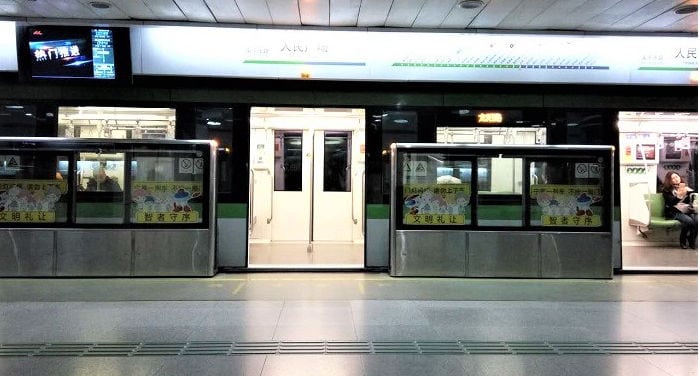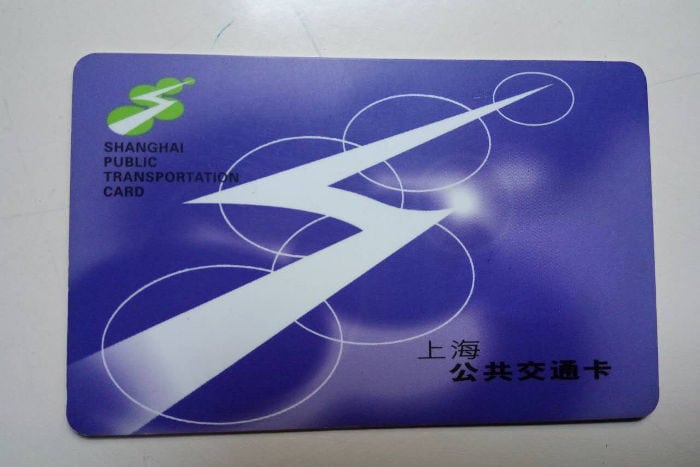
Shanghai is home to one of the best metro systems in the world, fulfilling the needs of the city dwellers facing rapid urbanization. Modeled after Hong Kong’s stellar MTR system, Shanghai’s metro network keeps expanding and improving.
In the ramp up to the Beijing Olympics in 2008, massive infrastructure expansions were seen along China’s coastal cities. Since then, large investments have been allocated to metro projects allowing Chinese cities to advance much quicker than their global counterparts. The systems were designed to be extensive and affordable, and people of all demographics are being brought onto the system. As China continues to invest in infrastructure, Shanghai has an ambitious plan to continue expanding its metro system to service more people.
Here are a few reasons why Shanghai’s metro system beats the rest.
1) It’s cheap, fast, and convenient
Riding the metro in China feels like living in the future. With the rapid growth and development of the systems in just the past couple of decades, the facilities and trains are modern and user-friendly, as well as safe.
The metro is one of the most affordable ways to get around quickly. The average amount spent per trip being 3-9 Chinese Yuan one way, which is about $0.50 – $1.30 USD. You can easily buy a one-way ticket at a machine, which has service in Mandarin and English.
You can buy a rechargeable Shanghai Public Transport Card (SPTC)” (交通一卡通 or jiaotong yi katong, in Chinese) at the service center, with a 20 Yuan ($3 USD) deposit. This card can be used on the metro as well as buses, ferries, and in cabs. You can reload these cards with larger amounts of credit, and can even reload them yourself at a self-service station and pay with a card or Alipay.
Not only is it cheap – it’s fast. It takes about 3 minutes to go from one stop to the next, instead of 15-20 minutes of walking or waiting in traffic for the same distance.
Before you get on the train, you will pass a bag safety check, and then take the escalators down to the platform. You’ll notice there are gates in front of the tracks to prevent people from falling.
The trains are timed to the second – they come regularly, about every three to five minutes, and have timetables displayed on TV monitors near the entrances to the doors. If you do get caught in a closing door, don’t worry – the sensors will open the doors again until you or whatever was blocking the door is out of the way.

2) The system is simple and foreigner-friendly
Simplicity makes traveling on the metro easy. While the system is massive, it’s straightforward and easy to read since each line has an individual color and number. The shiny stations are easy to navigate, and almost all of the signs are in Mandarin and English.
The station layout is simple, and exits are numbered and with many maps by the exit turnstile. If you need help finding an exit, service desks are located in the middle of the stations. Just look for the desk in the middle of the station with a worker wearing a pink shirt. They almost always speak a bit of English and can answer your questions.
Most stations are also equipped with vending machines and bathrooms, though the bathrooms are basic facilities without toilet paper. Unlike the headache you might experience trying to figure out another city’s system, Shanghai’s network is quick to figure out and use.
3) It’s the most expansive system in the world
Shanghai has the most extensive metro in the world, and there’s no sign of slowing down. The system opened just in 1995, and by 2020, the network will span 506 stations and 804 kilometers. Lines 11, 12, and 13 were expanded in 2015, adding 27 new stations. The metro makes it easier than ever for those residing farther out in the city to travel to the city center. It also makes it easy to reach tourist sites, cultural sites, and get to work quickly.
4) Easy access to other points of transport
Whether you’re taking a train, plane, or automobile, Shanghai’s metro will get you there. The system is seamlessly linked with other forms of transport in the city. Shanghai’s metro is connected to all four train stations and both airports, with a quick ride up the escalator to the entrances. Bus stations and stops are also easy to find with a quick walk from the metro stations, and ferries are also a quick walk away.
Although the trains can get crowded during rush hour, Shanghai’s impressive system is continuing to expand and service the urban population. The metro makes living in the city more affordable and accessible for everyone and is certainly something for other cities to live up to.
Photo Credits: Photo by Rachel Sorenson




Many thanks for this nice article about the Shanghai metro.
I’ve travelled with this metro myself and I can confirm each of the 4 points listed.
Perhaps is our online navigation system for the Shanghai metro useful as well
https://www.metrocazar.com/shanghai/
Thanks for sharing looks quite useful